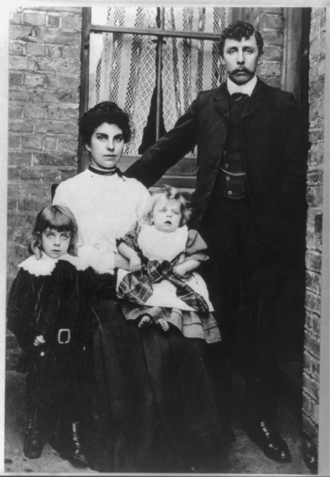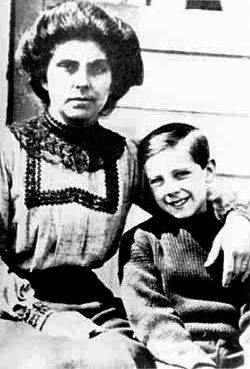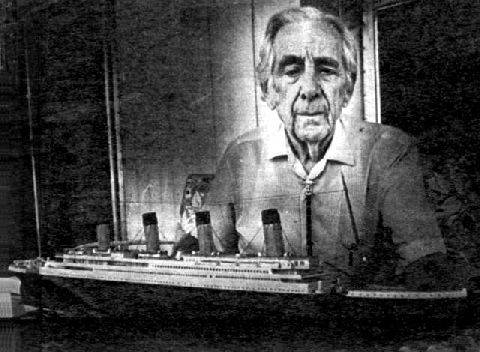One Family's Story
/Dozens of families with third class tickets boarded Titanic at Southampton, Cherbourg, and Queenstown, with the hope of making a new start in America. Instead, some went to their graves, with every family member being lost in the sinking. For those that survived, many lost family members. Only a handful of third class families reached New York Harbor intact.Frank Goldsmith, 33, worked as a machinist in Strood, England. He and his wife, Emily, had one son, nine-year-old Frankie. They’d lost a younger son, Bertie, to diphtheria in 1911, and Emily’s father encouraged the family to come to Detroit, where he had emigrated, for a new start. All the publicity about Titanic and her comfortable third class accommodations won Frank over, and the decision was made. Frank’s coworkers in Strood gave him a new set of tools as a parting gift, Emily packed her Singer sewing machine, and Frankie dropped his new cap pistol into their packing case.

Frank and Emily Goldsmith with Frankie and Bertie in 1907
In Detroit, an English neighbor of Emily’s father arranged for his younger brother, Alfred Rush, to travel with the Goldsmiths. Alfred would turn 16 during the voyage. Another friend from Strood, 34-year-old Thomas Theobald, also traveled with them.
Frankie couldn’t wait for his big adventure ahead. His mother bought a seasickness remedy called Gibson’s Fruit Tablets, and Frankie ate them like candy on board Titanic, even though he didn’t feel the least bit seasick. He was thrilled to learn they would stop in Cherbourg and Queenstown before heading to America.

Frankie with his mother
Frankie recalled, “Not only were we going to America, we were going to another land, France! Then bonus wise, we would also be going to Ireland next, two fairy-tale places that tripled the joy in the eyes of a nine-year-old boy.” As Titanic left Queenstown on their second day at sea, Frankie said, “Mummy! At last we’re on the ‘lantic!” He soon made friends with several other English-speaking boys in third class. They climbed the baggage cranes and sneaked into the lower decks to watch the stokers at work.
When the Titanic struck the iceberg, Frank Goldsmith managed to quickly usher his family, Alfred, and Thomas to the lifeboats. Emily and Frankie were put into Collapsible C. Frank told his son, “See you later, Frankie,” and stepped away to allow women and children to board. Alfred had celebrated his birthday and proudly wore his first pair of long pants. He was small for his age, according to Frankie, and may have passed for a child and been allowed to board. But Alfred declared, “I’m staying here with the men!” Thomas gave his wedding ring to Emily, asking her to send it to his wife back in England.
Frank Goldsmith, Alfred, and Thomas did not survive. Only Thomas’ body was recovered.
Emily Goldsmith and Frankie made their way to Detroit with the help of the Salvation Army. For a long time, Frankie hoped his father would somehow walk through their door, until he gradually accepted the fact that his father had perished in the disaster.
He and his mother moved to a home near Detroit's Navin Field, which later became Tiger Stadium. For years, whenever the Detroit Tigers scored a home run, the roar of the crowd reminded Frankie of the screams from the dying passengers in the water as the Titanic sank. He married and had three sons, but never took his children to baseball games for that reason. He later moved to Ohio and in 1981, wrote Echoes in the Night: Memories of a Titanic Survivor. It became the only book written by a third class passenger about the sinking.

Frank Goldsmith in 1980
Frankie Goldsmith died in 1982 at age 79. That April 15th, the 70th anniversary of the sinking, his ashes were scattered over the area where Titanic rests, and where he lost saw his father. Today, the Goldsmith family continues to share the story with Titanic enthusiasts around the US and the world.
